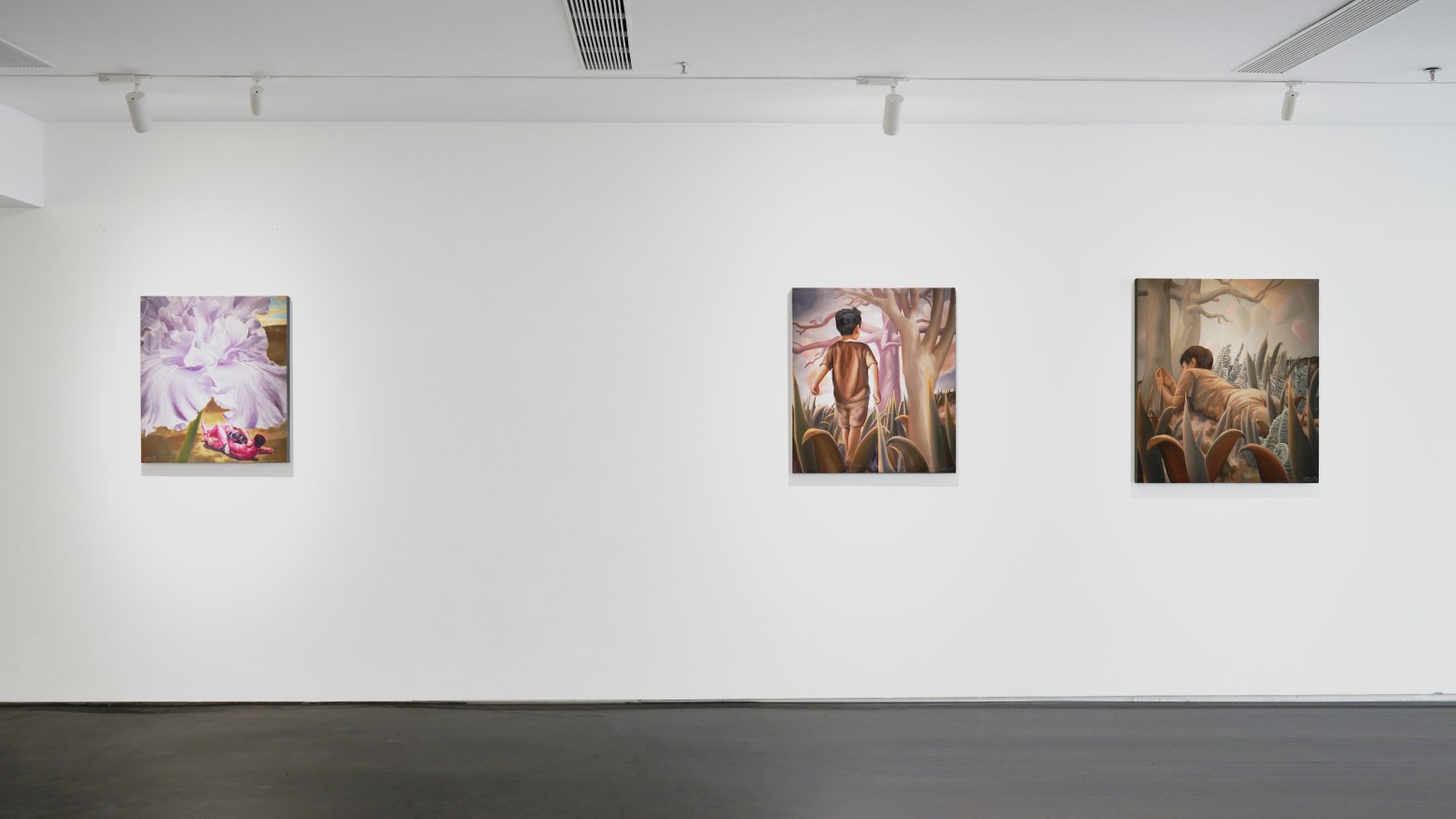
ARCH GALLERY's group exhibition Regard: The Presence of an Absence is now on view. We had the privilege of visiting participating artist Li Leo's painting studio, engaging in a dialogue with him and inviting him to share his insights on his creative process and the expression of his personal philosophy.
In his exploration of dynamic balance, Li Leo's paintings are anchored in his humble stance of humanistic concern. Imagery from literature and film serves as an endless wellspring of inspiration, allowing him to gradually distill and emanate an inner peace through color. Through this dialogue between ARCH CHANNEL and the artist—ranging from creative motifs to the creative process, and from the artist's humanistic reflections to the exhibition's theme of "Regard"—the conversation culminates in a profound engagement with the exhibition's core concept. Based on the video interview, this article is presented in both video and text formats for easy viewing.
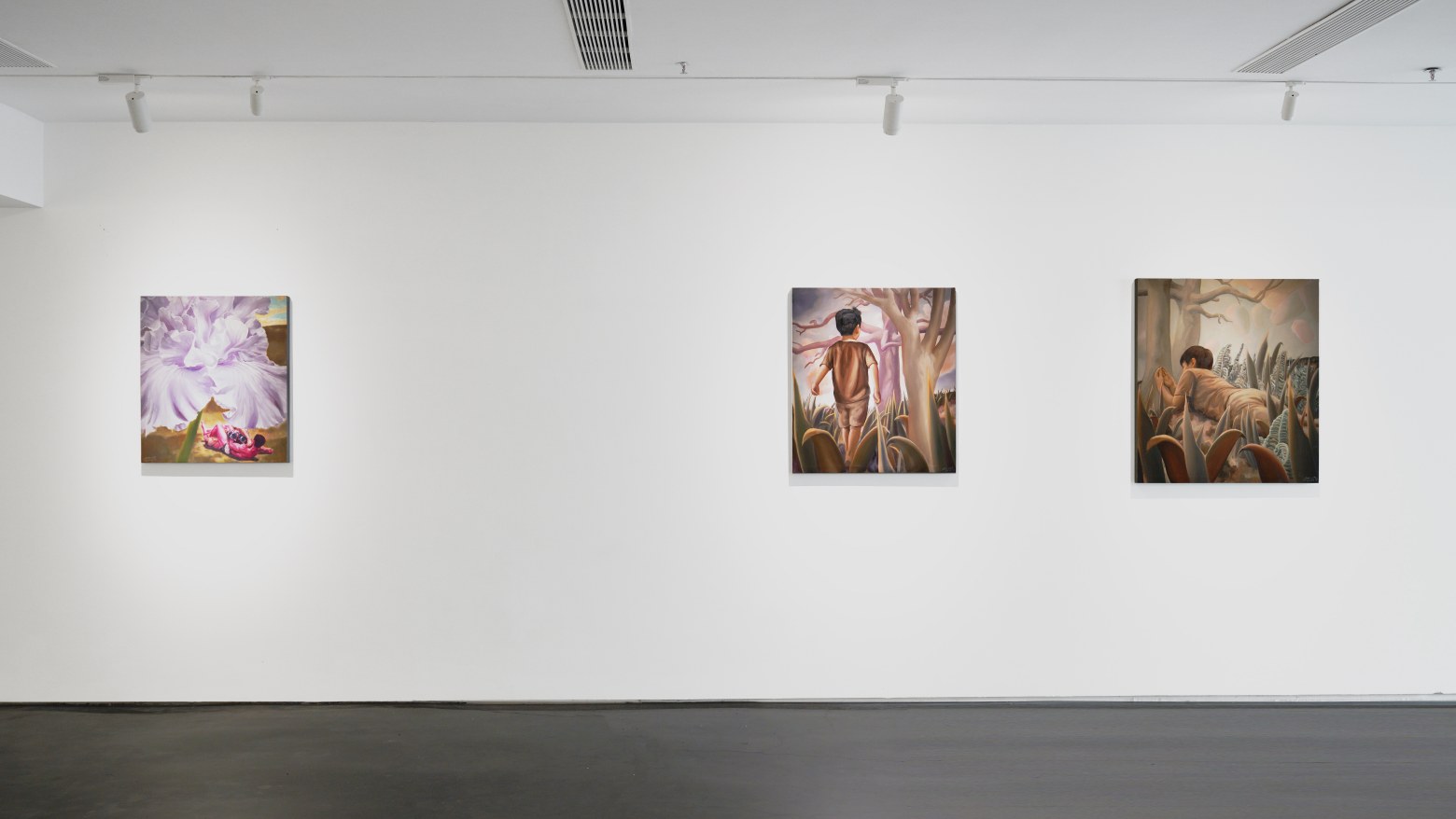
“My creative practice unfolds through the method of ‘image-writing’. The logic and purpose of this writing are not for narration; instead, they seek to interweave personal observations and reflections by reconstructing images within the logic of the formal language of painting. For me, creation is a purely personal space—one that is sufficiently vast. The collision between external perceptions and internal reflections can be expressed on the canvas, giving me a sense of freedom and being blessed.” — Li Leo
ARTIST INTERVIEW
Q: ARCH CHANNEL
A:Li Leo
Q1:You mentioned the symbolism of "the child" in the third metamorphosis from Thus Spoke Zarathustra. Could you explain how your works are grounded in this notion of "a new beginning, a self-rotating wheel, and a sacred affirmation"? In your series of works, children appear as expressive imagery—what was the turning point that led you to start exploring this theme?
A:This dates back to two or three years ago. At that time, because the scope of activities was limited, I would often take my dog for walks in the hills near my home during my free time. Those unremarkable little hills nearby, once a childhood paradise for me and my playmates, let me rediscover them after all these years. Coincidentally, during that period, I was also leafing through Nietzsche’s works and Calvino’s The Baron in the Trees, gradually developing the idea of using youth as a vehicle for expression.
I realized that the perspective of youth, along with how branches grow on the land underfoot, how flowers bloom, how ferns and thorns intertwine, how insects and ants forage and move, fish swimming and birds flying, the colors of light and shadow cast by sunlight through treetops—all of these are worthy of being painted. And in this era of great changes, "I am" is something that deserves everyone’s attention and reflection.
Nietzsche once said, “A child is innocence and forgetting, a new beginning, a game, a self-rotating wheel, an initial movement, a sacred affirmation”—this struck a chord with me perfectly, so I took this as the starting point to begin experimenting with this series.
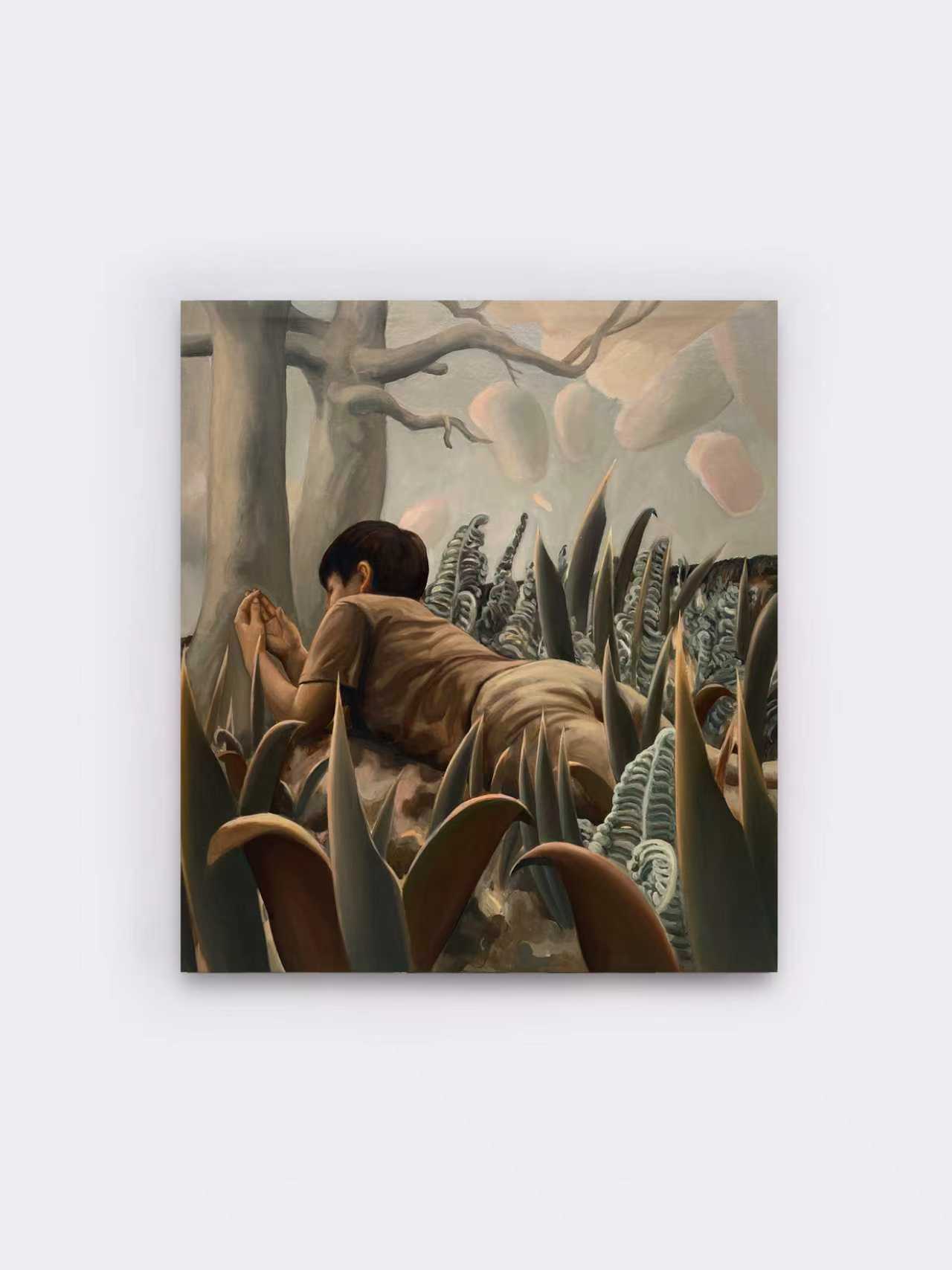
Q2:How do you usually process various kinds of information—such as reading, watching films, music, and real-life events—and incorporate them into your own painting system?
A:It seems many artists create based on emotional intuition, and this sometimes makes me envy them. Creating purely by intuition is a hurdle for me—I always have many doubts about what to paint and how to paint it. I need to find a logical foundation for both form and content before I can proceed, so rational thinking plays a significant role in my creative process.
Reading, watching films, music, and real-life events are usually my sources of themes or starting points for reflection. I try to "translate" these into paintings through the method of "image-writing." Take The Golden Age as an example: its starting point is Wang Xiaobo’s novel of the same name. It’s important to emphasize that I arrange visual elements, composition, and colors based on the overall impression from reading rather than the narrative plot. What needs consideration is balancing the relationships within the painting, ensuring that different thematic elements maintain an overall continuity in their treatment, without too much deviation.
Q3:Could you summarize the more essential motifs in your creative work?
A:The children and mountains/forests in my paintings are vehicles of expression. I am willing to anchor my creative motifs in the inquiry into humanistic care—a concept that may seem vague, yet it is something essential.
The history of human civilization's progress is, in essence, the history of the development of science and humanity. Since the modern era, driven by an extreme pursuit of efficiency, science has taken a dominant position, while humanistic values have become relatively marginalized. Technology has grown exponentially; logically, such a significant increase in productivity should be enough to make life easier and more comfortable for all humanity. Yet in reality, the pace of life is faster, and most people are busier just to survive. Ultimately, this may stem from the absence of humanistic care in the design of human systems as a whole.
Turning to art: postmodern art has evolved for years now, and it seems all that could be deconstructed has been deconstructed. Should we then deconstruct "deconstruction" itself, and acknowledge and reconstruct something new? I don’t know. This question is better left to anthropologists and philosophers. I just feel that no matter how the times evolve, the eternal theme of art will always be rooted in humanistic care.
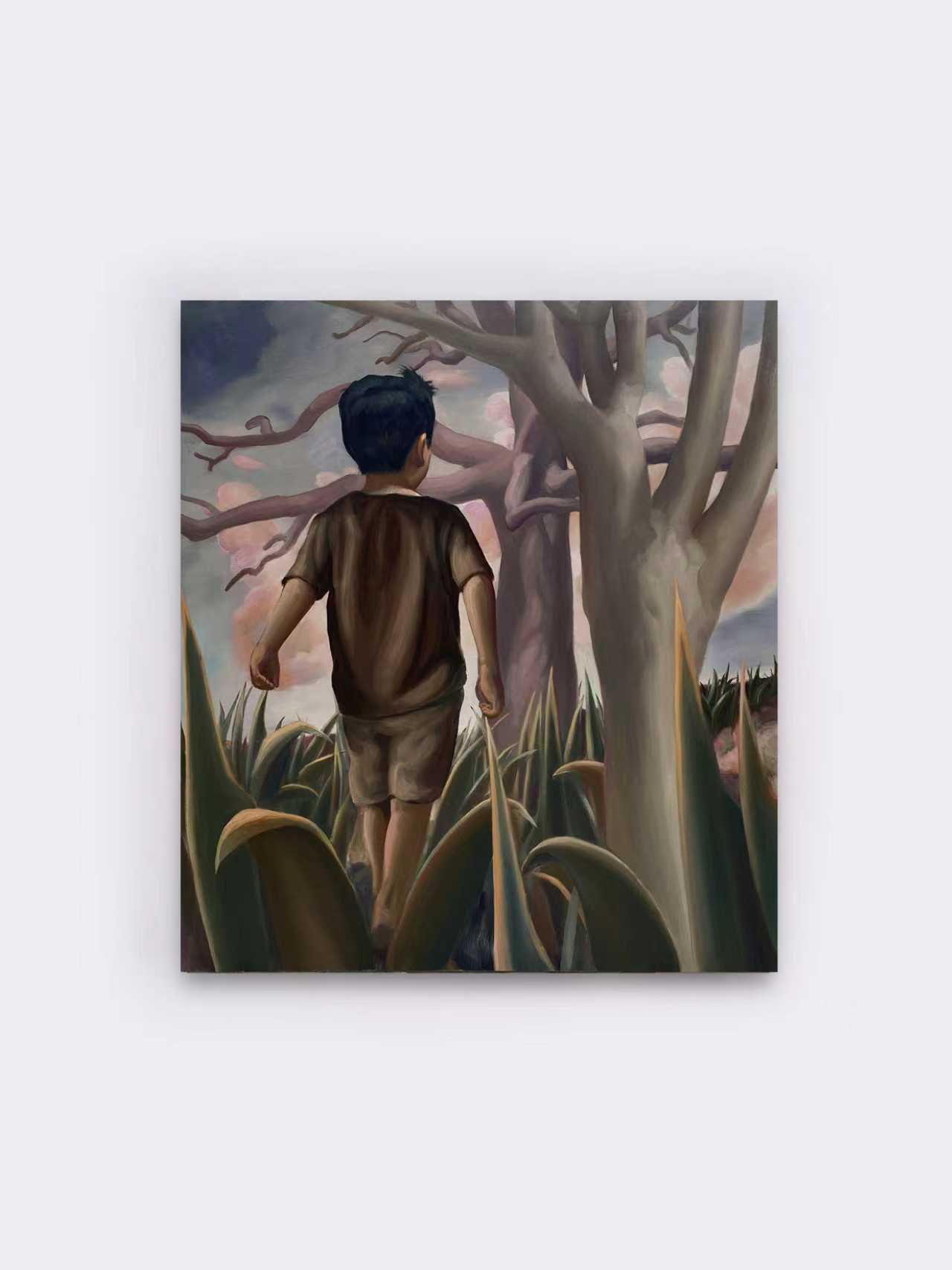
Q4:In the process of establishing your personal painting style, what reflections have you incorporated?
A:This process is dynamic—thinking while practicing. On one hand, it involves figuring out what I’m naturally good at, what to retain, and what to discard; on the other hand, it’s about how to expand my horizons. During the practice of painting, accidental effects sometimes emerge, and perhaps within those accidental elements, there are valuable things worth exploring.
I also selectively absorb insights from masters, and the New Leipzig School has had a significant influence on me.
Q5:For your creative work, which is more important: "balance" or "breakthrough"?
A:From my personal perspective, I prioritize balance—though of course, if there can be some breakthroughs, that would be even better. Nowadays, achieving truly groundbreaking achievements in easel painting is extremely difficult. In fact, over the years of painting, I’ve made quite a few attempts, which can mostly be categorized as failed ones.

Q6:The theme of this exhibition is "Regard: The Presence of an Absence." Do you believe there are "unspoken elements" or "hidden absences" in your works? How do you view this part of your works?
A:Actually, everything I want to express is already in the paintings. There are implicit elements of passive resistance in my works, which may not be easy to detect, but that doesn’t matter. Half lies in the work itself, and the other half in the viewer’s projection—each holds half of the "absence," and when combined, they give rise to a new "presence." This feels good, and I like this kind of "Regard: The Presence of an Absence."
Q7:In your introduction, you mentioned your humanistic perspective and demonstrated a humble attitude in exploration, which is a rare quality in artistic creation. How do you think the humanistic perspective and sense of care position themselves in your painting philosophy?
A:The responsibility that art bears in society is to care for the human spiritual world. Though the power of art is meager today, and my personal stance is even more negligible, I still hope to center my painting philosophy and creative motifs around the humanistic perspective. For this aligns with the logic of my engagement in painting, and it is a meaningful, beautiful thing for me.
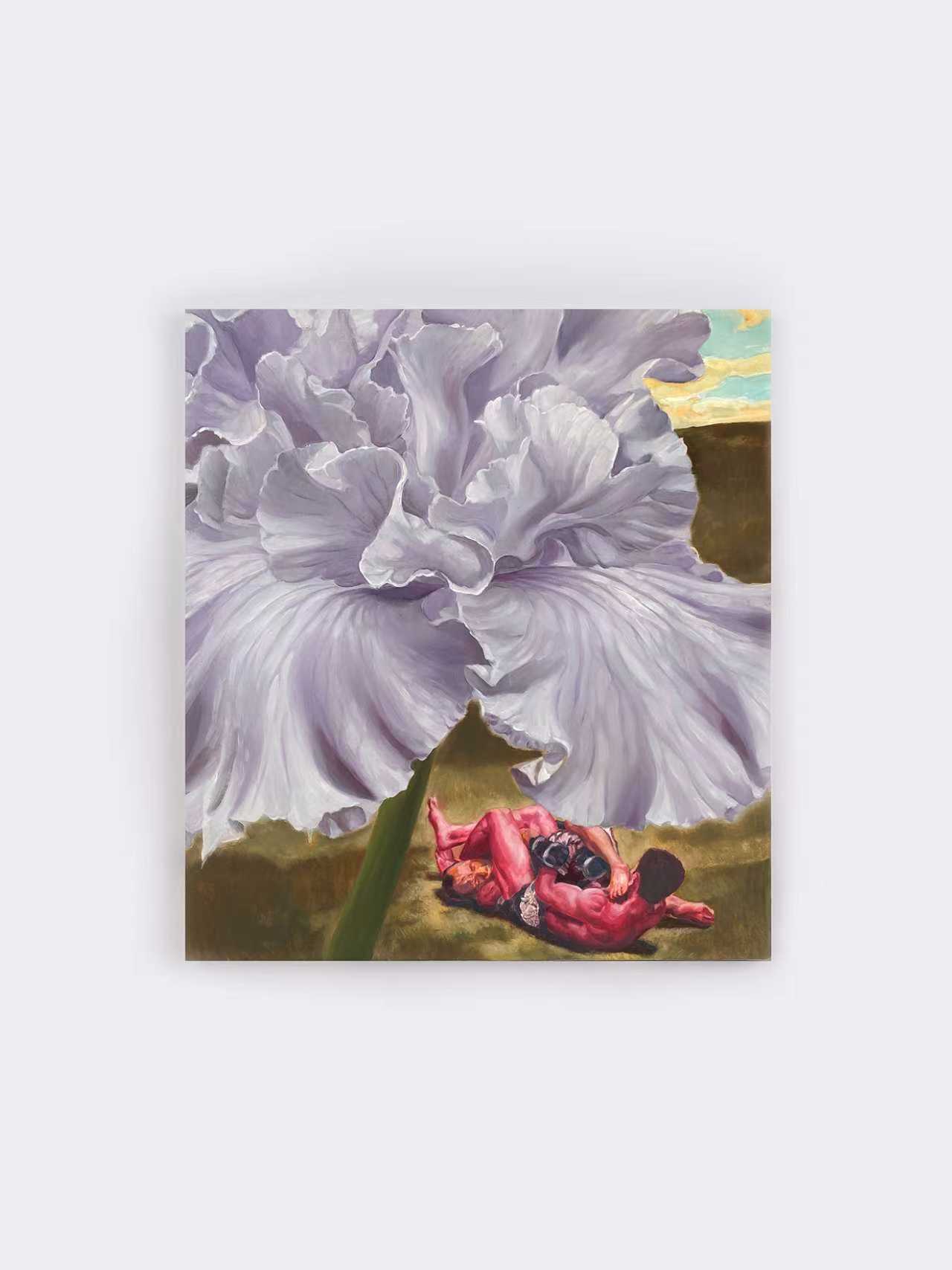
Q8:The expectation of this exhibition is to draw viewers into a shared context, turning "regard" into a form of "mutual gaze." What do you think of the dialogue with viewers unfolding in your paintings? What kind of dialogical practice do you hope for?
A:On the opening day, some friends talked to me about their feelings from viewing the paintings and also asked about the ideas behind my creative process. The paintings on the walls are like mirrors—everyone has a different perspective, and thus sees a different version of themselves reflected. Many viewpoints were things I never thought of at all during my creative process, which I found very interesting. I hope to hear more diverse opinions from everyone, as they also have positive reference value for me.

